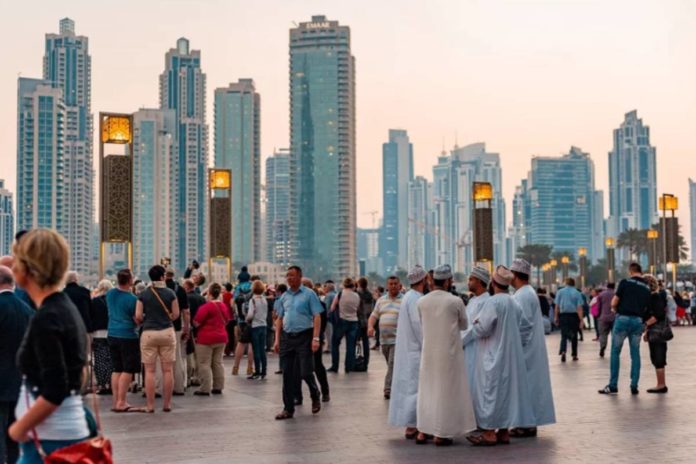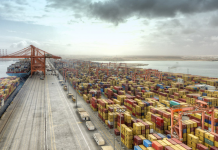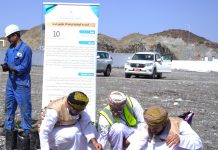Free zones and special economic zones (SEZ) have emerged as strong pillars in a country’s economic performance. From attracting foreign investment to creating employment and implementing latest technologies, these zones have laid the ground for a future where business transcends geographical borders and economic divisions.
With the global economy said to be heading for a slowdown, free zones are expected to develop as engines of economic diversification that keeps the investment process rolling.
BusinessLive Middle East takes a look at the future of these free zones and how they will shape the global economy in the days to come:
Smart Commerce
With the unstoppable rise of digital market models, smart commerce platforms will become big in the next decade. These platforms will use artificial intelligence, blockchain, virtual business licences and advanced business models to expedite commercial transactions, allowing companies from across the world connect and trade with ease.
Read: These 20 Countries Will Dominate Global Growth in 2024
Last year, Dubai Airport Free Zone Authority (DAFZA) announced the development of Dubai Blink, world’s first B2B smart commerce platform. The initiative is expected to start within two years and promises to boost trade for companies operating in Dubai’s free zones driven by innovation and technology.
Big Business and SMEs
Changing global market dynamics are pushing more free zones to rethink their competitive advantages. Free Zones and SEZs are now creating initiatives that enable global companies and small and medium-sized enterprises (SMEs) to easily set up businesses. According to World Bank data, SMEs represent about 90% of businesses and more than 50% of employment worldwide. World Bank estimates that 600 million jobs will be needed by 2030 to absorb the growing global workforce, which makes SME development a high priority for many governments around the world.

Economic Contribution
In 2018, free zones accounted for 36% of UAE’s non-oil foreign trade, data from the Federal Customs Authority shows. The Dubai Multi Commodities Centre (DMCC) – ranked as the world’s best free zone by Financial Times’ FDI Magazine for five consecutive years – has delivered an annual average growth rate of nearly 30% in the last 10 years. In 2017, the Middle East accounted for $552 billion worth of exports from free zones. The staggering numbers reflect the growing contribution of free zones in a country’s GDP.
Collaboration
Evolving economies call for evolving business practices. And collaboration between countries and global free zones could be the way forward.
Earlier this year, African leaders launched the African Continental Free Trade Area (AfCFTA) – the largest bloc since the creation of the World Trade Organization in 1994.
If successful, the 55-member nation free trade zone will unite 1.3 billion people, creating a $3.4-trillion economic bloc and usher in a new era of development, according to the World Economic Forum.
Read: Meet the economy that the IMF sees growing 86% in 2020
On the regional turf, Sharjah Publishing City partnered with the Sharjah Economic Development Department to launch a dual-trade licence allowing companies to promote their products and services both within the free zone as well as UAE mainland’s markets.
The Dubai Free Zones Council has also entered into an agreement where companies operating in one of the emirate’s free zones will be able to operate in other free zones without the need for a second licence. Such initiatives will continue to enhance the appeal of free zones for investors. Active support to promote clusters and linkages is also key to maximizing development impact.
Employment generation
Creation of jobs was of the key appeals of free zones. Years later, that appeal hasn’t changed.
According to World Investment Forum, there are some 5,400 free zones across 147 economies today, up from about 4,000 five years ago, and more than 500 new SEZs are in the pipeline. Job creation is one of the direct economic contributions by these free zones. For example, this year, Indian companies added 854,234 jobs in Dubai, latest data from Dubai Economy showed.
Yet, free economic and trade zones still have a long way to go. A solid regulatory framework, strong institutions and good governance are critical to make the zones success.
Read BusinessLive Middle East’s Free Trade Zones & Special Economic Zones Special Report 2019-20
INTRODUCTION: Free-trade Zones & Special Economic Zones
CHAPTER 1: Booming Business of Free Zones
CHAPTER 2: Finding Value in Free Trade Zones
CHAPTER 3: Future of Free Zones
CHAPTER 4: Challenges Faced by Investors in Free Trade Zones
CHAPTER 5: Special Feature – Ras Al Khaimah Economic Zone at a Glance






